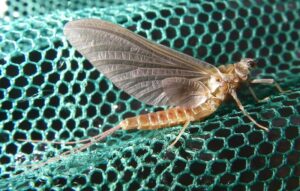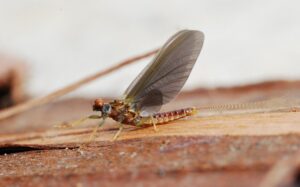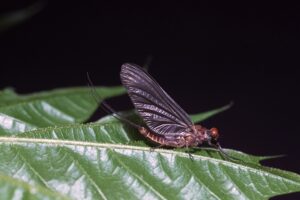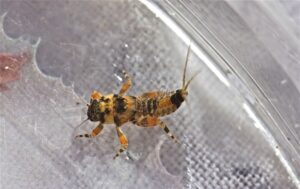Hendrickson Mayfly (Ephemerella subvaria)
Updated on
17/11/2022The Hendrickson mayflies are insects known for their extremely short adult lifespans.
Scientific Classification
- Class:Insecta
- Order:Ephemeroptera
- Family:Ephemerellidae
- Genus:Ephemerella
- Scientific Name:E. subvaria
Conservation Status
Description
Adult mayflies are 0.125 – 0.625 inches and have large eyes. The males are reddish, while the females are gray.
Distribution: The United States
Habitat: Trout streams, riffles, and runs
Do They Bite/Sting: No
Lifespan: 24 hours
Predators: Birds like flycatchers and swallows, fish such as trouts, flies, frogs, water beetles
Behavior and Characteristics
Feeding
They only feed in the nymph stage as the adults lack mouthparts.
Life Cycle
During the single day the adults are alive, they mate. The male rises from the water first, soon followed by the female. Breeding occurs mid-flight. The female oviposits the fertilized eggs on the surface of the water bodies, after which they expire.
1. Egg Stage
The eggs fall from the surface to the bottom, where they incubate. They hatch in a few weeks.
2. Nymph Stage
Nymphs have two antennae, six legs, and three tails. It is a crawler, preferring to move along the ground as any attempts to swim would lead to dislodgement and getting swept away by fast currents. They are about 0.33-0.5 inches long, with females larger than males.
3. Dun Stage
Once they are mature enough, the nymphs begin to emerge, shedding their exoskeletons and developing tan-colored wings. This is when it is vulnerable to predation. Females are called Dark Hendricksons, and males as Red Quills.
4. Spinner Stage
Like other mayflies, these insects undergo one more molt from the dun stage. The wings become translucent, and the coloration tends to be shades of brown.
Interesting Facts
- These mayflies are used by anglers as bait as fish like trout are attracted to them.
Source
frostyfly.com, news.orvis.com, theflypatch.com, blogspot.com









